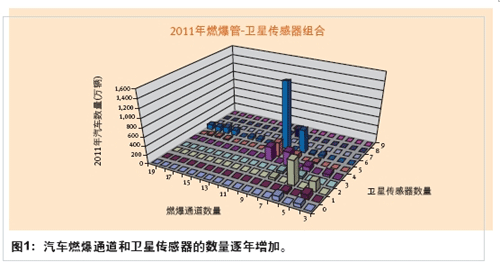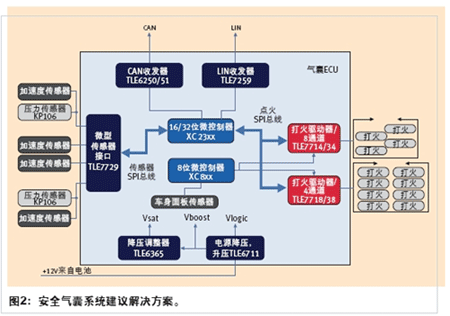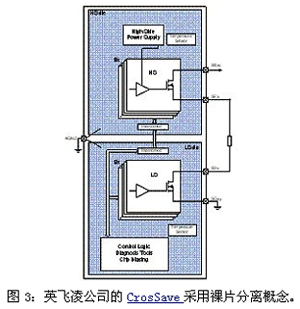Airbags play a vital role in the assisted restraint system (SRS). At present, the installation of airbags in passenger cars has become a standard. Everyone knows that airbags and seat belts can reduce the chances of the occupant's head and upper body hitting the interior of the car in the event of a car collision. They also reduce the risk of occupant injury by distributing the impact force more evenly. From the initial use of seat belts as occupant protection devices, car designers have developed integrated airbags and seat belts for more comprehensive collision protection. This article refers to the address: http:// Today, Korean and Chinese-made cars, driver's seat and front passenger seat are usually fitted with seat belt pretensioners. Some related studies have also shown that the diversification of the function of airbag systems will become a trend in these regions. Despite the increasing complexity of airbag systems, it is necessary to reduce system costs. Constraint system development trend The Automotive Evaluation Protocol (CAP) activities carried out by a number of agencies have significantly increased the risk awareness of collision protection. The demand for smarter restraint systems is increasing day by day, with a view to enhancing the protection of occupants and minimizing the potential adverse effects of airbag explosions under various accident conditions. Finally, a sensing component is deployed for the restraint system to define the type of collision, degree of collision, occupant type, occupant position, and seat belt usage. Advanced constraint system management needs to consider a variety of different collision accidents because they each have different sensing requirements and constraint triggering strategies. For example, frontal collision sensing and side collision sensing are quite different. The activation time of the active side airbag is usually within 5 milliseconds, while the front airbag requires 25 milliseconds of right and left time. This is because the distance between the inside and the outside of the vehicle and the distance between the inside of the vehicle and the occupant are much shorter than the frontal collision, so that the side collision will hurt the occupant earlier. In addition, the development of rollover sensors has also become a trend. This sensor detects an impending rollover accident as early as possible in order to activate safety measures to protect the occupants. The rollover sensor is either installed in a separate rollover module or installed in a central central electronic control unit. The seat belt pretensioner and the side air curtain are triggered in the event of a rollover accident. In addition, occupant type and position related information plays a crucial role in optimally protecting the occupant in the event of a collision. Therefore, the in-vehicle sensor measures the weight and position of the occupant and sends it to the central control unit to minimize the risk of injury from airbag inflation. Future airbag systems will be fitted with pre-crash detection devices to determine if a collision has occurred and its severity. The pre-collision detection device enables the system to determine whether or not to blast the airbag based not only on the distributed acceleration sensor measurement value but also on the measurement of the radar system that detects the approaching object. The collision zone acceleration sensor can provide acceleration data in preference to an accelerometer within the electronic control unit. These systems require additional acceleration sensors, high speed amplifiers, and data converters to be installed in the body. Recently, relevant people have been considering whether they can take some measures to reduce the damage of cars to pedestrians and other road users who have not taken protective measures. Related studies have shown that an effective pedestrian protection system can reduce the risk of pedestrian death or disability in the event of a car accident. With the deepening of research by various agencies and the implementation of new regulations, it is expected that more and more advanced restraint systems will be available. Systems using pedestrian airbags will also become a reality. These systems not only protect the safety of passengers and drivers in the car, but also reduce road traffic death and disability. In summary, automotive safety restraint systems are moving toward more triggers and more sensors, making protection systems more advanced. Figure 1 shows that by 2011, cars will generally use 10 blasting channels and 6 satellite sensors, while currently using 4 blasting channels and 2 satellite sensors. Can higher integration meet low cost requirements? A single-chip solution seems to have many advantages: it is easy to design, saves space, and reduces unit cost to some extent. But are these factors sufficient to solve all the problems facing the current market. Unfortunately, this is not the case. Looking at the current market and future trends, flexibility is critical for OEMs who need to meet the needs of emerging and mature markets by adopting a single solution. A versatile configuration for a more cost-effective solution, such as 6 squibs and 4 satellite sensors based on current demand (this is not a low-cost application, 4 squibs and 0 satellite sensors are low-cost applications) This provides the flexibility needed to enhance the system and is designed to handle other capacity needs. Standard and enhanced options are available through the same base unit. Higher design flexibility directly impacts cost efficiency by reducing engineering costs and time. The dual chipset offered by Infineon Technologies AG meets the requirements of this solution. For example, the electronic control unit board design with the Infineon satellite IC TLE7729, combined with the blast tube ICs TLE7714 and TLE7718, supports four sensors and eight blast cycles to meet emerging market needs that typically require fewer blast channels. . In addition, this board can be expanded without redevelopment, supporting up to 8 sensors and 12 squibs. The picture below shows the solution provided by Infineon. In general, if the cooling system is not designed properly, the higher the integration, the more likely it is to have a thermal fault. This is especially important due to the special nature of the restraint system. In addition, relevant statistics show that single-chip solutions have a higher weight risk than two-chip solutions if not handled properly. This is easy to explain. In a two-chip electronic control unit, if one chip fails, the other chip can still operate, thus reducing the probability of damage to adjacent systems or occupants. Due to the high probability of failure of the integrated system, more detailed diagnostics and self-tests are required to ensure that all units operate and communicate as designed. Only in this way can we ensure a fail-safe state. At present, Infineon offers two chip solutions. Both solutions are available in a compact package with comprehensive diagnostics to meet the needs of cost-effective and high-security markets. For example, the upcoming satellite IC TLE7729 can connect two sensors with one channel, whereas the conventional technology can only connect one sensor per channel. This interface can be used as an internal register. In addition, for added security, the chip integrates power protection modules, namely thermal shutdown, short circuit protection and current limiting. In addition, the CrosSafe function of the blast tube IC TLE77 series also provides fail-safe protection against possible manufacturing failures (chip defects, electrostatic discharge damage, etc.). Two switches are installed in each of the squib channels to achieve redundancy. These two switches ensure that current flows into the squib only under controlled conditions. This feature can be achieved in three ways: with a single IC integrated high side (HS) and low side (LS) switches; using two identical ICs but separating the high side switch and the low side switch by PCB design (intersection Coupling); or two different chips can be integrated into one package using two different technologies. In addition, the use of a blasting current meter (DCMC) in Infineon's new squib IC provides data to be collected by the Event Data Recorder (EDR) in the event of an accident. Accesories For Pc,Pc Casing,Pc Shell,RAM And SSD Shenzhen Innovative Cloud Computer Co., Ltd. , https://www.xcycomputer.com


What role does the supplier play in meeting the requirements of the constraint system manufacturer?